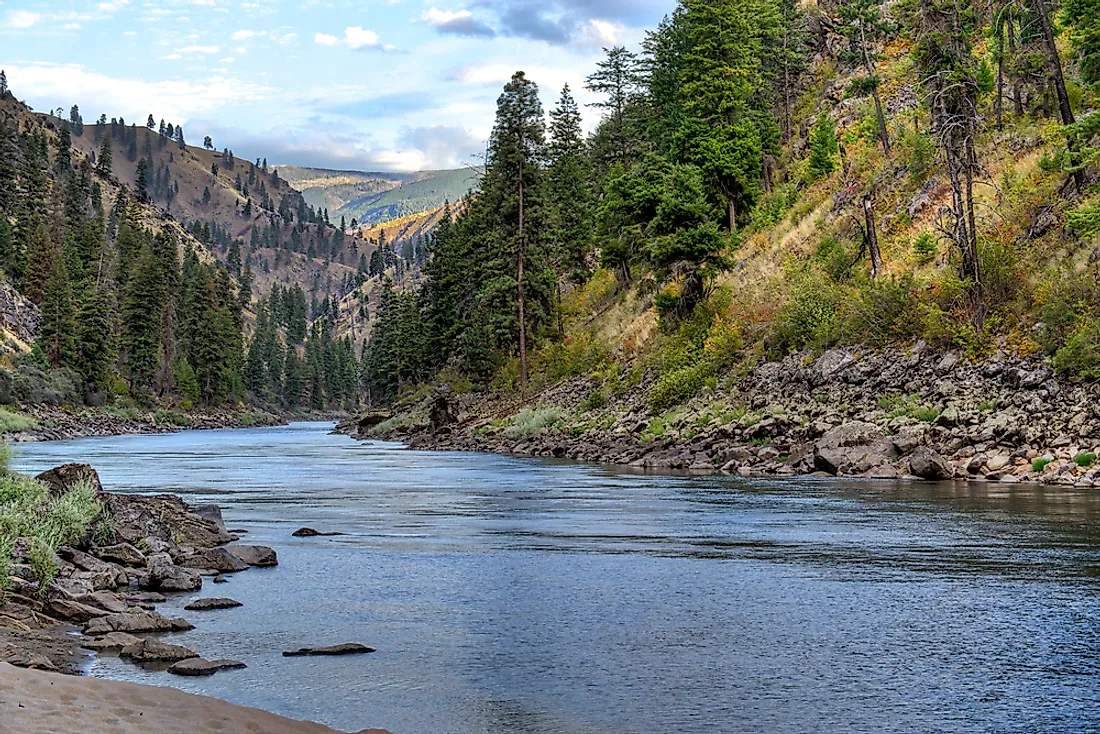The 10 Longest Rivers in Idaho

Idaho is a state in the northwestern part of the US, and it borders the states of Utah, Nevada, Wyoming, Montana, Oregon, and Washington. On the northern side, the state shares a common border with the province of British Columbia in Canada. The state of Idaho covers an area of about 83,569 square miles and has a population of about 1.7 million people. The state is the 14th largest in the country, the 12th densely populated, and the 7th least populous in the whole country. The state capital of Idaho is the city of Boise, which is also the largest city in the state. Before the European settlement, the region that is now the state of Idaho was inhabited by the Native Americans. At the beginning of the 19th century, it was part of the Oregon County which was hotly contested between Britain and the US. After the signing of the Oregon Treaty in 1846 the territory officially became part of the US, and finally, Idaho joined the union on July 3rd, 1890 and became the 43rd state to join the nation. Some of the largest rivers passing through the state include the Snake River, Bear River, Kootenai River, Salmon River, and Owyhee River among others. Salmon River is Idaho’s longest river that lies wholly within the states.
The Longest Rivers in Idaho
Snake River
The Snake River covers a distance of 1,078 miles, and it is one of the main tributaries of the Columbia River. The river originates in the western part of Wyoming state and flows through Idaho to Oregon and finally to Washington before emptying into the Columbia River which eventually flows into the Pacific Ocean. The drainage basin of the Snake River covers parts of 6 states in the country. The Native Americans are thought to have lived along the Snake River for more than 11,000 years. The salmon fish from the Pacific Ocean moved in millions upstream of the Snake River to spawn and was, therefore, a source of food for the natives who lived along the river. In the 19th century when the Oregon Trail was well established, it brought settlers and with them the steam boats and railroads that moved different commodities such as minerals and agricultural products along the river for the better part of the 19th century and early part of the 20th century. The watershed of Snake River is the 10th biggest of North America's rivers and drains an area of about 108,000 square miles and most of its watershed lie between the Rocky Mountains and the Columbia Plateau. The river is the 13th longest rivers in the US.
Bear River
The river covers a distance of 491 miles, and it is the most significant tributary of the Great Salt Lake. It is also North America’s largest river which does not discharge to the sea. The Shoshone community from antiquity has inhabited the river valley of the Bear River. In 1812, the explorers and the fur traders from the Hudson’s Bay Company started exploring upstream, while the Mormon trail crossed the Bear River in around 1843. The Oregon and California trails followed the river north out of Wyoming to the Fort Hall in the state of Idaho, and some of the explorers on these trails decided to stay on around the river valleys of Utah and Idaho. In the late 1840s, some of the early pioneers of the Mormon trail settled in the Cache Valley. In 1863, the US army troops invaded the Shoshone people in the Cache Valley and killed many of the inhabitants. The episode has been referred to as the Bear River massacre.
Conservation
In 1968 the Congress passed the Wild and Scenic Rivers Act, which was aimed to protect outstanding natural water with cultural and recreational values in their free-flowing condition. The act prohibits development of new dams or any other water project along the riverside lands or the wildlife migration corridors in order to safeguard clean water. The Act also prohibits any other activity that would diminish the unique values of a River.The act protects more than 166 rivers in 38 different states. The state of Idaho has more 1,000 miles long of the country’s most beautiful wild and scenic rivers, which is protected by the Act.
The 10 Longest Rivers in Idaho
| Rank | River | Length (miles) | Length (km) |
|---|---|---|---|
| 1 | Snake River | 1,078 | 1,735 |
| 2 | Bear River | 491 | 790 |
| 3 | Kootenai River | 485 | 781 |
| 4 | Salmon River | 425 | 684 |
| 5 | Owyhee River | 346 | 557 |
| 6 | Clark Fork | 310 | 500 |
| 7 | Palouse River | 167 | 269 |
| 8 | Bruneau River | 153 | 246 |
| 9 | Big Wood River | 137 | 220 |
| 10 | Blackfoot River | 136 | 219 |











